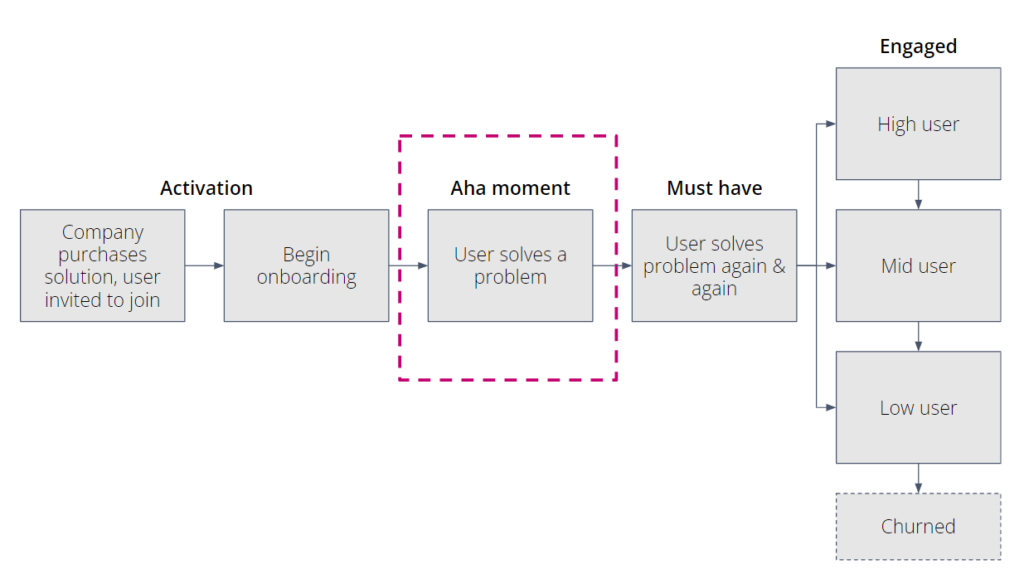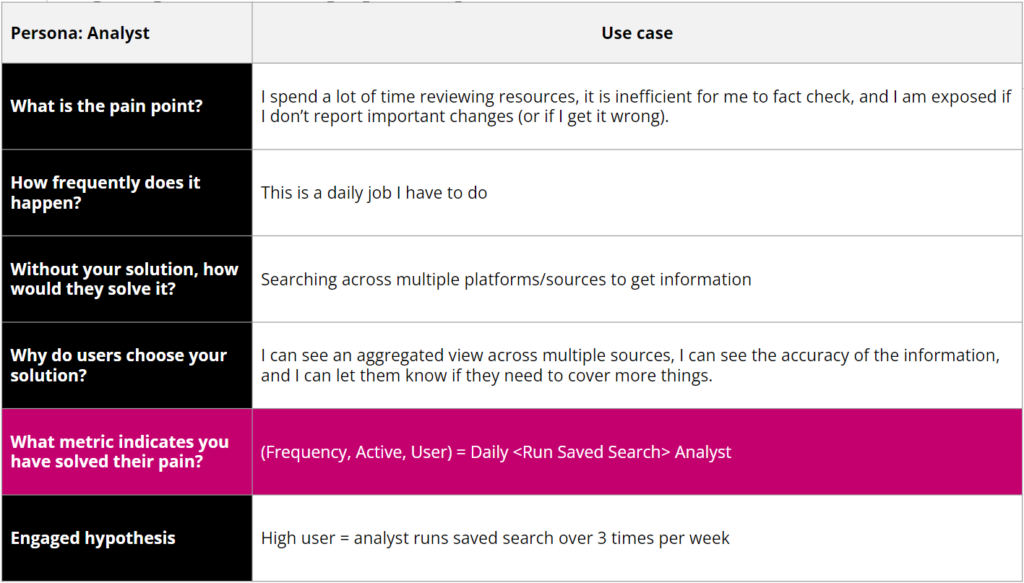How your customer engages with your product is a leading indicator of success or failure. But usage on its own won’t cut it.
Often, increased usage is seen as a green light for retention. Usage data is aggregated at account level, with little analysis around the who, or what. But product usage on it’s own doesn’t mean an outcome has been achieved. Increased usage can even be a signal that something isn’t right – how do you know users aren’t wasting time navigating to get to the outcome they need?
Knowing what problems you’re solving, who for, and how, will give you the insight you need to interrogate usage and make better predictions on retention.
product engagement strategy
How advanced is your product engagement strategy? A benchmark for companies with established subscriptions hovers around the middle.

To get a better idea of where to start, let’s take a look at a typical user engagement journey. It’s not as simple as labelling users as active/non-active or engaged/not engaged.
using the aha moment
User engagement should start during activation. The onboarding of users should lead to an aha moment (aha moment – when a new user first realises the meaningful value in your product). This value should be repeated to form a habit. The habit should lead to a state of ‘must have’. A user is engaged only when these steps have been completed. Knowing the natural frequency of the problem a user is solving helps to categorise low, mid or high users, or spot churn.

configuring product usage to value
To help better understand if usage has delivered value, focus on the most important aha moments for the most important user segments. A good starting point is mapping a use case, identifying up to three aha moments, for one user segment. See the use case map below.
In the following example, an analyst is using a platform to aggregate information. The key is identifying when you know an aha moment (connected to an outcome) has been achieved, and deciding how it will be measured. Then adding this into your usage reporting as a leading indicator of customer health and retention.
But getting to this point takes time. Start by getting a team together to shortlist the aha moments using the map. Then validate directly with your customer and engagement data. Better still, get us in to help you.

If you want to know more about how Substribe unlocks innovation with recurring revenues, please get in touch with Steve Budd.


Leave a Reply